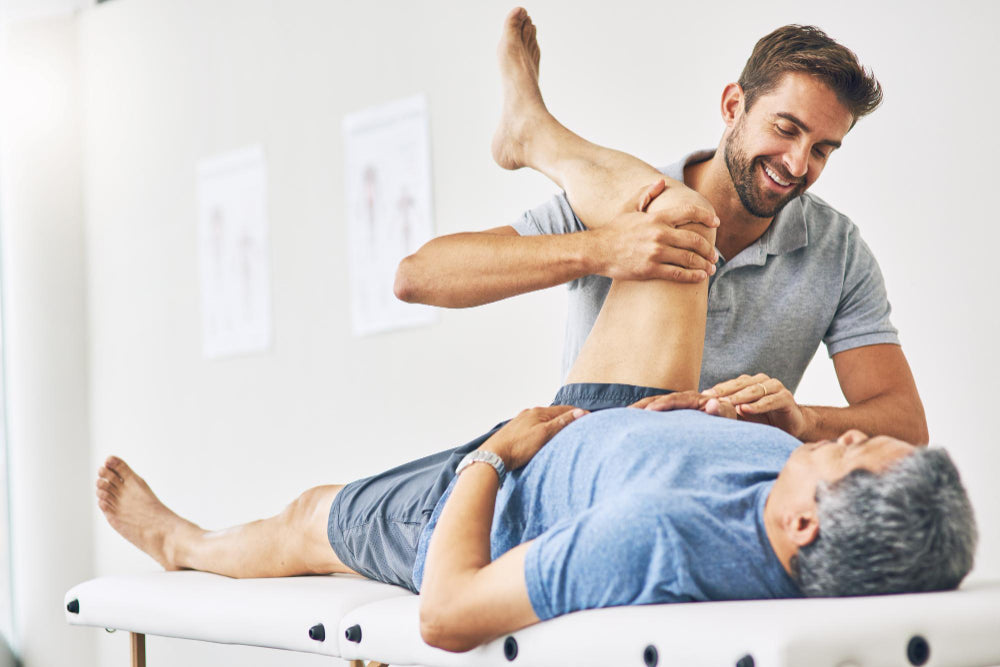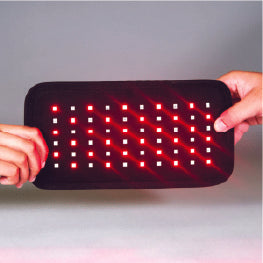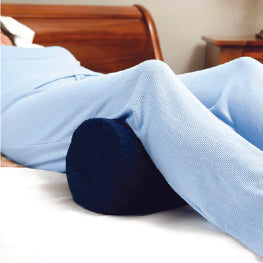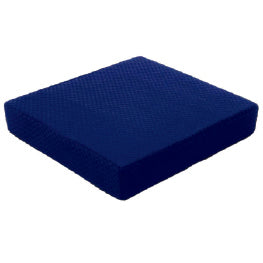
Hip Impingement Treatment Options
If you are dealing with a hip impingement, then you may want to know how to solve the issue. Here is a guide to different hip impingement treatment options.
Author:START READING
Hip Impingement Treatment Options
If you are dealing with a hip impingement, then you may want to know how to solve the issue. Here is a guide to different hip impingement treatment options.
Jump to a Section:
Related Articles
- Hip Impingement: Injury Overview
- The Best Hip Impingement Treatments
- The Best Hip Impingement Exercises
- The Best Hip Impingement Stretches
Hip impingement affects up to 15% of the general population and can cause severe pain and discomfort.
But what is it, how does it occur, and how can you treat it effectively?
Hip impingement, also known as femoroacetabular impingement (FAI), occurs when the ball and socket of the hip joint rub against each other abnormally, limiting flexibility and causing damage to the joint. This can make daily tasks like walking, sitting, and sleeping challenging and painful.
The condition typically affects old individuals but can develop at any age due to genetic predisposition, lifestyle factors, or past injuries. If you or a loved one is suffering from hip impingement, it's essential to seek treatment options that can help manage pain, improve mobility, and prevent further joint damage.
If you're unsure where to start, this guide is for you. We'll explore various approaches to hip impingement treatment, including physical therapy, medication, surgery, and more.
Non-Surgical Treatment
It's tempting to jump straight to surgical interventions for hip impingement, but taking a holistic approach first can provide immense benefits.
Combining physical therapy, lifestyle modifications, and anti-inflammatory medications can help reduce pain and improve mobility. Not only is this approach less invasive, but it also addresses underlying causes and can prevent future problems.
So, before you schedule that hip surgery, consider exploring these non-surgical options first.
Rest and Activity Modification
When dealing with any injury, rest is paramount. Without giving your body enough time to recover, inflammation and pain can persist, and in a case like hip impingement, where the hip socket and femur rub against each other, it's crucial to limit activity and avoid movements that may worsen the injury.
Modifying and avoiding movements that can cause discomfort and further harm is important. Avoid all of the following motions to prevent irritation and aggravation of the hip joint:
- Running
- Jumping
- Squatting
- Deep lunges
- High-impact activities
- Pivoting on the affected leg
- Prolonged sitting with hips flexed
- Deep hip flexion
- Repetitive twisting motions
Instead, incorporating low-impact exercises like swimming, cycling, elliptical trainer, water aerobics, yoga (modified poses), walking, and strength training for non-impacted muscles can help maintain strength and flexibility without aggravating the hip joint.
Pain Management
From sharp, sudden pains that hit without warning to consistent, aching discomfort that can impact daily activities, hip impingement can cause various types of pains in different areas of your midsection.
Therefore, pain management plays an essential role in hip impingement treatment. Proper pain management allows you to manage your pain more effectively, making everyday activities easier. It can also enhance the quality of life by reducing discomfort and improving overall mobility.
To achieve hip impingement pain relief, consider the following methods.

Hot & Cold Therapy
Hot and cold therapy works by alternating heat and cold on the affected area. For example, you could use a heating pad for 20 minutes, followed by an ice pack for 20 minutes. The heat helps to soothe the muscles and improve blood flow, while the cold helps to reduce inflammation and swelling.

Massage
Getting a massage can do wonders for your hip impingement pain, as well as your overall well-being. When performed by a qualified therapist, the benefits of a massage include:
- Reducing inflammation
- Improving circulation
- Supporting your body's natural healing processes
Plus, it's a great way to de-stress and unwind, which can help reduce anxiety levels and improve your overall quality of life.

Kinesiology Tape
Kinesiology tape is a flexible, stretchy tape that can support the affected area while reducing inflammation and tension. The tape is applied directly to the skin and is designed to mimic your muscles and joints' natural range of motion. This can help improve circulation and ease discomfort, making it a great option for managing hip impingement pain.

TENS Therapy
TENS therapy involves using a small, battery-powered device that delivers electrical pulses to the affected area. These pulses stimulate the natural signals that your nerves use to communicate with your brain, effectively "blocking" pain signals from reaching your brain.
When used correctly, a TENS unit can provide significant pain relief without requiring medications or invasive procedures.

Red Light Therapy
Red light therapy involves using low-level lasers or LEDs to stimulate the cells in your body. This can help reduce inflammation, promote circulation, and trigger natural pain relief mechanisms, making it a great option for managing hip impingement pain.
The best part? Red light therapy is non-invasive and has few side effects, making it a safe and effective hip impingement treatment option.

Pain Relief Medications
While medications can help manage hip impingement pain, it's important to be aware of the potential risks and side effects of any pain relief medication.
Over-the-counter pain relievers like acetaminophen and ibuprofen can be effective for managing mild to moderate pain, but they can also cause liver and kidney damage if used excessively. For more severe pain, prescription medications like opioids may be necessary, but they carry a high risk of addiction and other serious side effects.

Physical Therapy
Physical therapy for hip impingement is a great option for those looking to improve their range of motion, flexibility, strength, stability, and gait biomechanics while reducing pain caused by the issue.
There are a variety of techniques used in physical therapy to achieve these goals, including:
- Stretching
- Strengthening exercises
- Core stability exercises
- Proprioceptive exercises
- Gait training
- Manual therapy
Sample exercises for hip pain include:
- Clamshells
- Bridges
- Side leg raises
- Modified squats and lunges
- Single-leg deadlifts
- Various stretches
Physical therapy can also help you better understand your body's movement and develop proper techniques for functional movements. It's a hands-on approach that can help you return to the activities you love with less pain and more confidence. Combine it with the following suggestions as part of full hip impingement rehabilitation.

Lifestyle Changes
Lifestyle changes such as weight loss, stress management, healthy diet, and adequate sleep are crucial in hip impingement treatment.
Extra weight puts pressure on the hip joint, resulting in more pain and discomfort. Therefore, losing weight can relieve some of the pressure on the hip joint.
It's also essential to manage stress levels, as stress can increase muscle tension, resulting in more hip pain. A healthy diet can also help reduce inflammation, allowing the body to heal faster, while adequate sleep is vital in the recovery process.

Injections
Platelet-rich plasma (PRP) injections involve using the patient's blood to create a concentrated mixture of platelets and plasma injected into the affected region. The platelets contain growth factors that promote healing, while hyaluronic acid injections lubricate the joint, allowing for smoother joint movement.

Proper Sleep Posture
Sleep is a crucial component of the recovery process, and it is essential to maintain a good sleep posture. Sleeping with a pillow between your knees can help align your hips and relieve pressure on your hip joint. Sleeping on your back with a pillow under your knees can also help reduce pressure, promoting better sleep.

Seat Cushions
Pressure on the hip can make pain worse, especially when sitting. Therefore, using a seat cushion can help relieve hip pain by reducing pressure on the hip when sitting. A cushion with a cutout for the hip or a memory foam cushion can help provide relief and make sitting more comfortable.
Surgical Treatment
When all else fails, surgery may be the only option for how to fix hip impingement. Surgery is typically only used in severe cases of hip impingement that do not respond to more conservative treatments, like physical therapy, medications, or injections.
It's important to remember that surgery is not a magic fix and requires time and effort to see results. Regardless of the surgery you choose, physical therapy is almost always needed after surgery to help rehabilitate the hip and restore strength and mobility.
Hip Arthroscopy
Hip arthroscopy is a minimally invasive surgical procedure that uses small incisions instead of one large incision. During a hip arthroscopy, the surgeon trims any bony abnormalities, removes loose fragments, and repairs any tears in the labrum.
The recovery time for a hip arthroscopy is typically around 4-6 months. However, every patient's recovery will be different, and it is essential to follow the surgeon's and physical therapist's instructions to ensure the best possible outcome.
Osteotomy
For severe cases of hip impingement, an osteotomy may be necessary. An osteotomy is a surgical procedure that repositions the hip socket to improve joint space. There are two main types of osteotomies:
- Periacetabular osteotomy (PAO)
- Femoral osteotomy
A PAO involves cutting the pelvis and repositioning the socket to improve the joint's alignment. Recovery after a PAO typically takes 6-12 months.
A femoral osteotomy involves cutting and rotating the thigh bone to improve joint function. Recovery after a femoral osteotomy can take up to a year.
It's essential to note that an osteotomy is a major surgical procedure with a longer recovery time than a hip arthroscopy. However, in cases where the impingement is severe, an osteotomy may be the only option for long-term pain relief and joint function improvement.
Tips for Recovery
The Key to Hip Impingement Treatment: Patience and Consistency
Hip impingement is a nagging condition that can affect anyone at any age. It occurs when there is abnormal contact between the ball of the femur and the hip joint socket. This impingement can lead to pain and discomfort in the hip, making it difficult to perform even simple tasks like walking or sitting.
If you're diagnosed with hip impingement, it's important to know that recovery is possible, but it will require patience and consistency. Unlike some injuries that can heal relatively quickly, full recovery from hip impingement can take anywhere from six to twelve months. So, be patient and give yourself time to heal.
The key to successful hip impingement treatment is patience and consistency. It can be tempting to push yourself too hard too soon, but doing so can lead to setbacks and prolong the healing process. Instead, focus on small, manageable steps you can take daily to strengthen your hip and improve your mobility.
To help you on your road to recovery, we've compiled some tips that you can incorporate into your daily routine.
Practice Stretching and Mobility Exercises Daily
As mentioned, one of the most effective ways to manage hip impingement pain is through stretching and mobility exercises. These exercises will help to improve your flexibility, alleviate stiffness, and reduce muscle tension. Some simple exercises you can try include hip flexor stretches, hamstring stretches, and foam rolling.
Start with Low-Impact Exercises
While jumping right back into your normal workout routine may be tempting, it's important to start slow and work your way up. Low-impact exercises are best for those with hip impingement as they place less strain on the hips. Try incorporating exercises like walking, cycling, and swimming into your routine.
Fuel Yourself with Proper Nutrition
Proper nutrition is essential for any recovery process, including hip impingement treatment. Maintaining a balanced and healthy diet is important to give your body the nutrients it needs to heal. Drink plenty of water, eat various fruits and vegetables, and avoid processed foods.
Get Plenty of Rest and Recovery
Finally, listening to your body and giving yourself time to rest and recover is incredibly important. If you feel sore or fatigued, take a break from your exercises and give yourself time to relax. Getting a good night's sleep is also essential for healing and recovery.
Incorporate Hip Impingement Recovery Aids
While hip impingement is an annoying and painful issue, various surgical and non-surgical hip impingement treatment options exist to help you recover and get back to living your full life.
The key to a non-surgical recovery is committing to routine exercises, stretches, and physical therapy sessions to improve your hip's strength, range of motion, and overall health. Remember to start slow, work with a physical therapist, focus on strengthening the hips, don't neglect flexibility, and take it easy.
To help speed up your recovery, browse our hip injury products.
Summary
Hip surgery is typically only used as a last resort for severe cases of hip impingement. Physical therapy is almost always needed after surgery to ensure the best possible outcome. Recovery times vary depending on the type of procedure performed and the patient's circumstances.
About the Author

Brandon Landgraf is the Digital Marketing Manager for Carex Health Brands. He finds passion and fulfillment in creating content that enhances, improves, and enlivens others' quality of life. All of his written work is formulated to not only offer essential advice and tips but back it with proven studies and experts. His mission is to connect with readers and provide steps to make their lives better.
About Carex Health Brands
Carex is your one-stop shop for home medical equipment and for products that assist caregivers with providing the best possible support and care for their loved ones. Carex Health Brands has been the branded leader in in-home, self-care medical products for over 35 years. Our goal is to improve the lives of our customers by bring them quality products that bring dignity back to their lives. With our three nationally distributed brands, Carex Health Brands serves national, regional and independent food, drug and mass retailers along with wholesalers, distributors and medical dealers.

